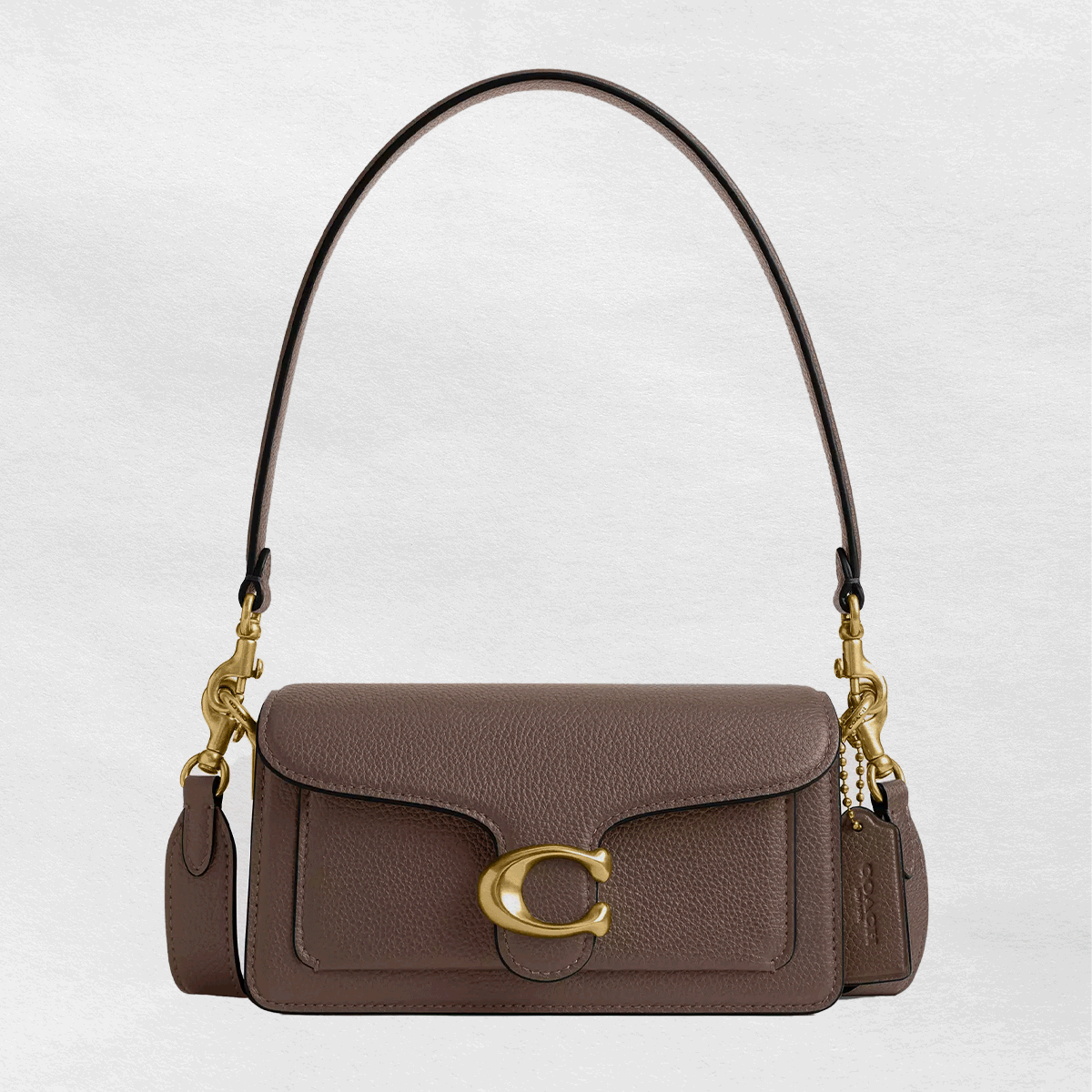Coach bags are primarily made in Vietnam, Cambodia, and the Philippines. While rooted in American heritage, the brand now uses global artisans for its production.

Table of Contents
- The Global Footprint of Coach Manufacturing
- Why Did Coach Shift Its Manufacturing Overseas?
- Does Manufacturing Location Affect Coach’s Quality?
- How Can You Identify Where Your Coach Bag Was Made?
- The Enduring Legacy of Coach’s Craftsmanship

Discover Where Coach Bags Are Manufactured: Quality and Craftsmanship
The Global Footprint of Coach Manufacturing
For many, the name Coach is synonymous with classic American style and New York City heritage. While this legacy remains at the heart of the brand, its manufacturing journey has evolved significantly. Understanding where Coach bags are made today requires looking beyond its origins and exploring its modern, international production network. This shift reflects a global strategy aimed at balancing heritage with accessibility for a worldwide market.

The brand’s identity is deeply connected to its history, which began in a family-run workshop. However, the label on a modern Coach bag tells a story of globalized production, with skilled artisans in various countries contributing to the final product. This expansion allows the brand to meet immense demand while navigating the complexities of international commerce.
From a New York Loft to International Factories
Coach was founded in 1941 in a Manhattan loft, where a small team of six artisans handcrafted leather goods. For decades, “Made in New York City” was a hallmark of their products, representing meticulous, local craftsmanship. This era established the brand’s reputation for using high-quality materials, particularly its signature glovetanned leather, which became softer and more supple with use. The quality and durability of these early pieces built the foundation of trust that the brand still enjoys today.
As the brand’s popularity soared, the need to scale production became evident. The Manhattan workshop could no longer meet the global demand for its handbags and accessories. This necessity prompted Coach to look beyond American borders, beginning a transition towards a more distributed manufacturing model that could support its growth into an international fashion powerhouse.
What Are the Primary Countries of Production Today?
Today, the vast majority of Coach bags are manufactured in Southeast Asia. The brand partners with top-tier facilities known for their expertise in producing luxury leather goods. While the specific locations can vary based on the product line and production needs, several key countries are consistently involved. This strategic placement allows Coach to leverage specialized skills and efficient production lines.
The label inside a new Coach bag will typically indicate one of the following countries, which are the current hubs for its production:
| Country | Primary Role in Coach Manufacturing |
|---|---|
| Vietnam | A major hub for handbag and small leather goods production. |
| Cambodia | Significant manufacturing presence, often working in tandem with facilities in Vietnam. |
| Philippines | Known for skilled artisans and quality assembly of various bag styles. |
| India | Often involved in crafting bags with intricate details, embellishments, and specialized leatherwork. |
| China | While production has shifted, China still handles the manufacturing of certain product lines and components. |
Why Did Coach Shift Its Manufacturing Overseas?
The decision for a quintessentially American brand like Coach to move its production abroad was driven by practical business considerations and the demands of a global market. This strategic pivot was not about compromising on quality but rather about ensuring the brand’s long-term sustainability and ability to compete on an international stage. The move allowed Coach to make its products more accessible to a broader audience without sacrificing the design and material integrity that defines it.
The Economics of Global Production
One of the primary drivers behind relocating manufacturing was economic efficiency. Producing goods in countries with lower labor and operational costs allows Coach to manage its pricing structure effectively. This makes it possible to offer a luxury product at a more accessible price point compared to European fashion houses that maintain production exclusively in Italy or France. By optimizing its supply chain, Coach can invest more in design, marketing, and high-quality raw materials while remaining competitive.
Scaling Craftsmanship for a Worldwide Audience
Meeting the immense demand for Coach products from a single US-based facility would be impossible. Global expansion provided access to a larger, skilled workforce and state-of-the-art manufacturing facilities capable of producing millions of items per year. This scalability is crucial for a brand with a presence in department stores and boutiques across the globe. The partner facilities are selected for their ability to execute complex designs and maintain consistent quality standards across high-volume production runs, ensuring that a bag purchased in Tokyo meets the same criteria as one sold in New York.
Does Manufacturing Location Affect Coach’s Quality?
A common question among consumers is whether a bag made in Vietnam or Cambodia can match the quality of one originally made in the United States. Coach addresses this concern by emphasizing that its commitment to craftsmanship is tied to its standards, not a specific location. The brand maintains rigorous oversight of every stage of the production process, from sourcing raw materials to the final stitch.
The key takeaway is that the brand’s reputation rests on the final product, not the “Made In” label. Coach invests heavily in training and quality control protocols at all its partner facilities to ensure that every bag, regardless of origin, lives up to the brand’s legacy of durability and style. This dedication to excellence is what upholds the value of the Coach name.
The Brand’s Unwavering Commitment to Craftsmanship
Coach’s quality control is a fundamental part of its global manufacturing strategy. The brand sets forth exacting specifications for every product, and its teams work closely with factory partners to enforce these standards. Artisans in these facilities are trained in the specific techniques required to craft Coach products, from stitching and edge painting to hardware attachment. The process is a fusion of time-honored leatherworking skills and modern production technology, ensuring each piece is both beautifully made and built to last.
Materials and Standards: The Core of Coach’s Identity
The quality of a Coach bag begins with its materials. The brand continues to be known for its high-quality leathers, including its signature glovetanned and pebble leathers, as well as durable coated canvas. These materials are sourced from top tanneries around the world and must meet strict criteria for texture, color, and durability before being sent to manufacturing facilities.
This focus on superior raw materials is a principle shared by true artisans in the leather industry. For instance, at Beldturaleather, the commitment to quality starts with sourcing only full-grain leather, celebrated for its strength and ability to develop a beautiful patina over time. Just as Coach built its name on durable materials, brands dedicated to pure craftsmanship understand that a product is only as good as what it is made from. This shared philosophy ensures customers receive an accessory that is not just stylish but also a long-lasting investment.
How Can You Identify Where Your Coach Bag Was Made?
For those curious about their specific bag’s origin, Coach provides clear indicators. Authenticating and understanding your bag’s history is part of the ownership experience. By examining a few key details inside the bag, you can pinpoint its country of origin and gain insight into its production journey.
Decoding the Creed Patch and Interior Tags
The most reliable way to determine where a Coach bag was made is to look at the interior creed patch or tag. In most modern bags, a small fabric tag is sewn into an interior seam. This tag will explicitly state the country of origin, with phrases like “Made in Vietnam” or “Made in the Philippines.”
In many vintage and some modern leather bags, a creed patch is stamped into the leather interior. This patch contains a style number and, in bags produced after the manufacturing shift, often includes the country of origin at the bottom. The absence of a country name on a vintage creed patch typically indicates it was made in the United States before the 1990s.
What Clues Do Style Numbers and Labels Offer?
While the style number on the creed patch primarily helps identify the bag’s model and production run, it indirectly supports authentication. When cross-referenced with online resources, you can confirm whether the bag’s style aligns with the era and location of its stated origin. Consistency between the creed, style number, and material quality is a strong indicator of an authentic Coach product crafted under the brand’s supervision.
The Enduring Legacy of Coach’s Craftsmanship
Ultimately, the story of where Coach bags are manufactured is one of evolution. The brand has successfully transformed from a small American workshop into a global fashion leader by adapting its production strategy without losing sight of its core values. The focus remains on delivering a product that embodies a unique blend of style, function, and durability.
Beyond the “Made In” Label: A Focus on Durability
For the modern consumer, the value of a Coach bag lies less in its country of origin and more in its performance and longevity. The brand’s continued popularity is a testament to its ability to produce high-quality, fashionable accessories that withstand the test of time. Whether crafted in New York decades ago or in Vietnam today, a Coach bag is recognized for its enduring appeal and robust construction.
Investing in a Piece of Fashion History
Owning a Coach bag is about more than just a fashion statement; it is about participating in a rich history of American design and leather craftsmanship. The brand has managed to preserve its heritage while making it accessible to a new generation of admirers around the world. The “Made In” tag simply reflects a chapter in this ongoing story, while the quality and style of the bag itself remain the true hallmark of the Coach legacy.


